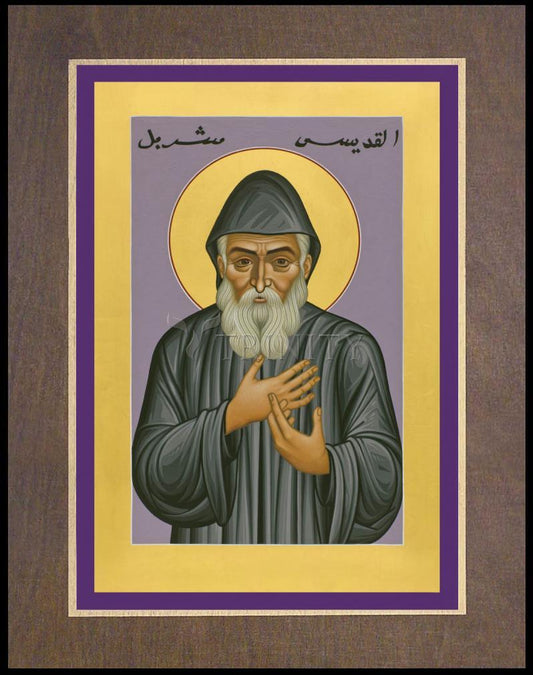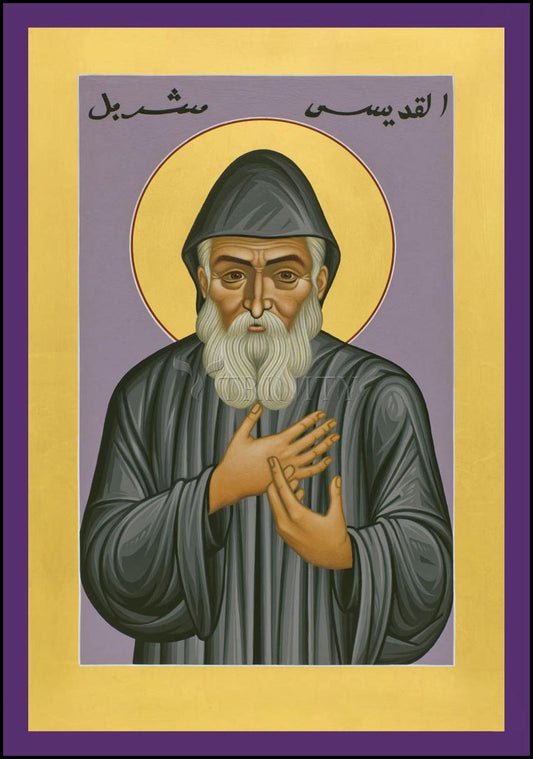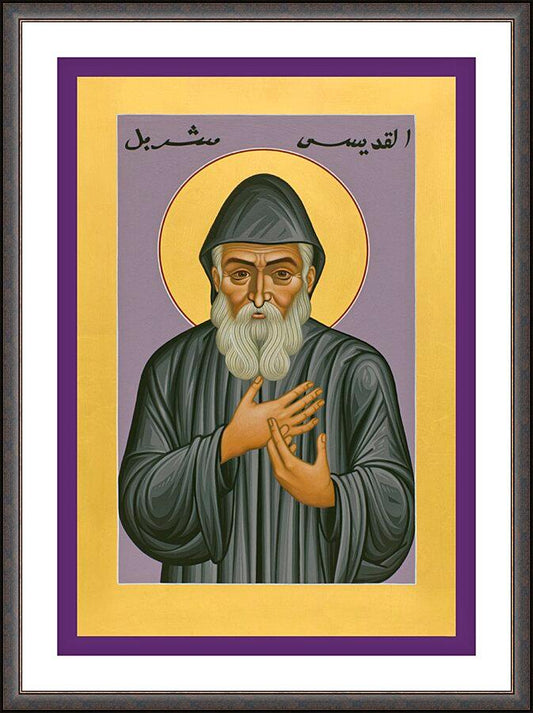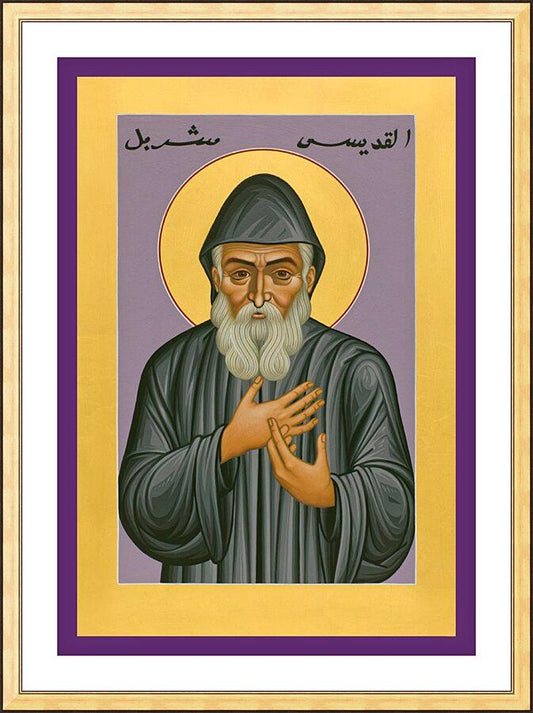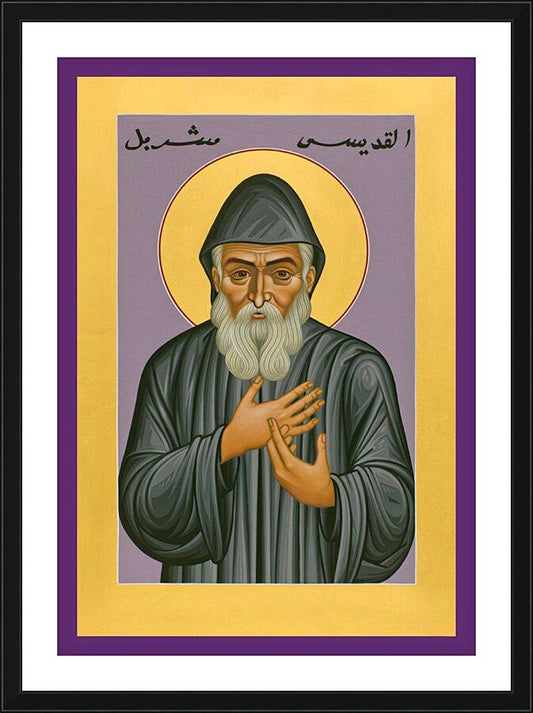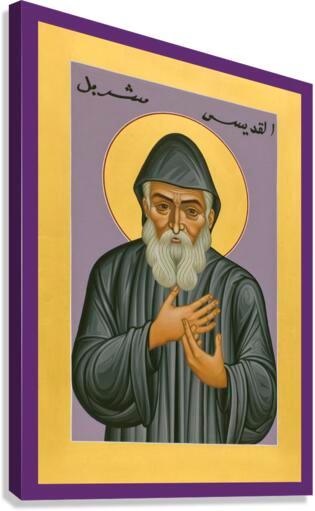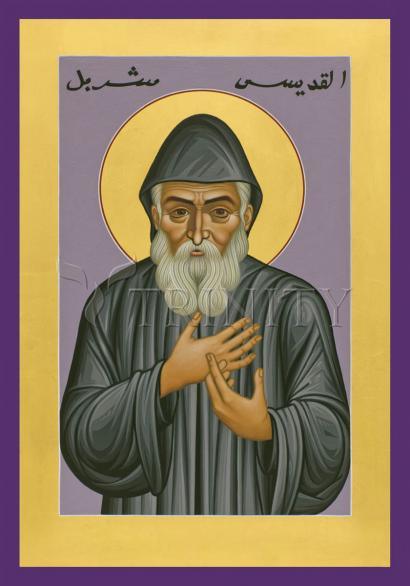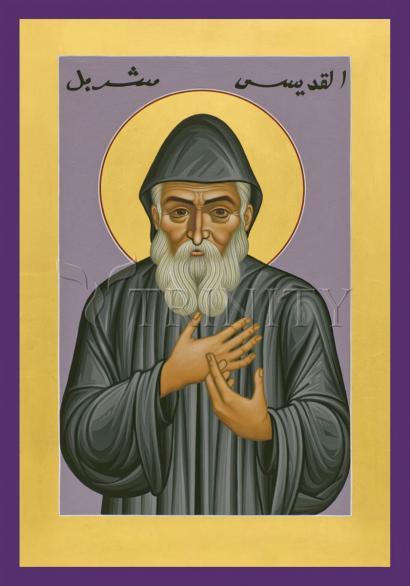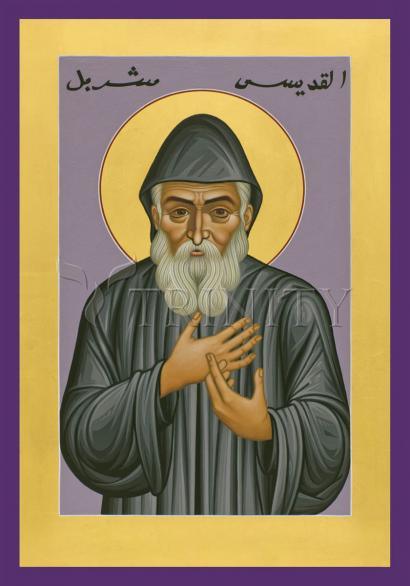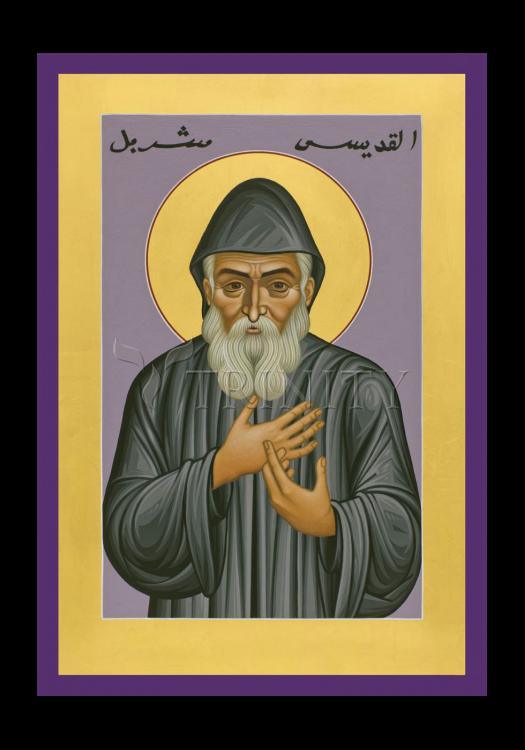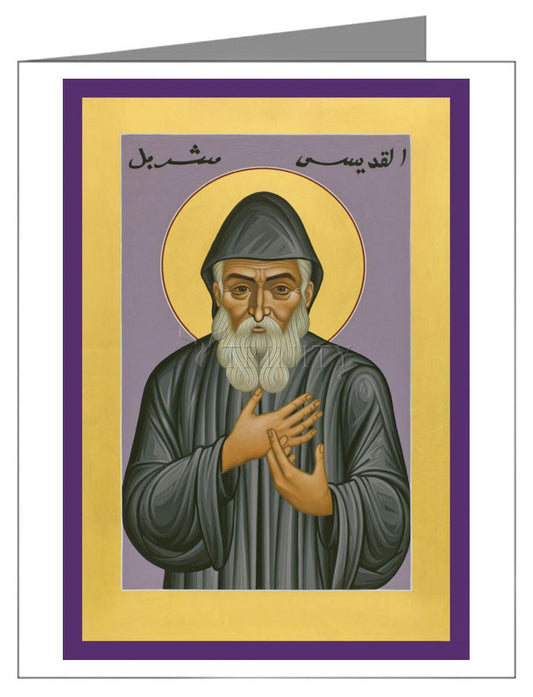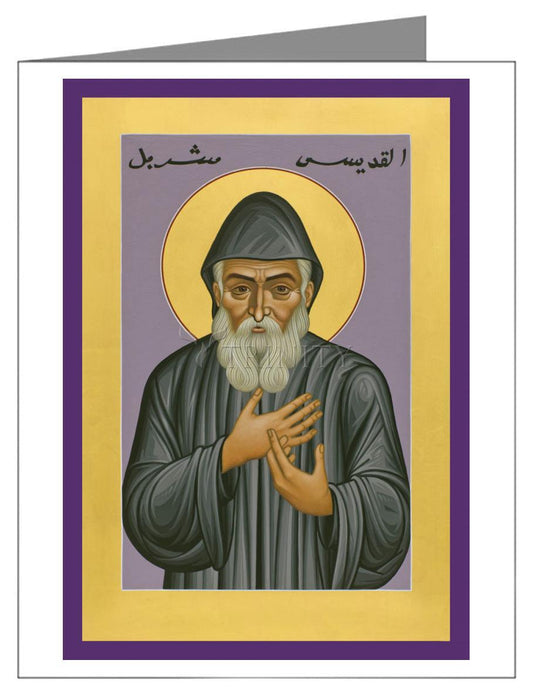Saint Sharbel was born on May 8, 1828 in Biqa-Kafra, a mountain village of Lebanon. Sharbel was born in a poor Maronite Family. At age 23 he joined the monastery Our Lady of Lebanon where he became a novice. In 1853 He was sent to Saint Maron Monastery and he took the vows of poverty, chastity and obedience.
His teacher (Saint Nimatullah Al-Hardini, who was canonized on May 16, 2004 by Pope John Paul II) provided him a good education and nurtured within him a deep love for monastic life. After spending 16 Years in the St Maron Monastery, Sharbel was granted permission to live as a Hermit (in 1875) near St Peter and Paul hermitage. Father Sharbel died the night before Christmas in 1898. After the confirmation of the miracles he had done, Saint Sharbel was canonized in 1975.
Although this saint never traveled far from the Lebanese village of Beka-Kafra, where he was born, his influence has spread widely.
Joseph Makhlouf was born in 1828 at Beqa-Kafra, Lebanon. His peasant family lived a strong faith, were attentive to the Divine Liturgy, and had a great devotion to the Mother of God.
At the age of 23, Charbel (the name he chose when entering Novitiate) left his closely knit family to enter the Lebanese-Maronite Monastery called Notre-Dame de Mayfouk. Following studies and profession at St. Cyprian de Kfifane Monastery, he was ordained in 1859.
For the next seven years, Charbel lived in the mountainous community of Anaya. After that he spent the next twenty-three years in complete solitude at Sts. Peter and Paul Hermitage near Anaya. He died there on Christmas Eve, 1898.
Charbel had a reputation for his austerity, penances, obedience, and chastity. At times, Charbel was gifted with levitations during prayer, and he had great devotion to the Most Blessed Sacrament.
In all things, Charbel maintained perfect serenity. He was beatified in 1965 by Pope Paul VI and canonized by Pope John Paul II in 1977.
On May 8, 1828 in a mountain village of Beka'kafra, the highest village in the near-east, Charbel was born to a poor Maronite family. From childhood his life revealed a calling to "bear fruit as a noble Cedar of Lebanon". Charbel "grew in age and wisdom before God and men." At 23 years old he entered the monastery of Our Lady of Mayfouk (north of Byblos) where he became a novice. After two years of novitiate, in 1853, he was sent to St. Maron monastery where he pronounced the monastic vows of poverty, chastity and obedience. Charbel was then transferred to the monastery of Kfeifan where he studied philosophy and theology. His ordination to the priesthood took place in 1859, after which he was sent back to St. Maron monastery. His teachers provided him with good education and nurtured within him a deep love for monastic life.
During his 19 years at St. Maron monastery, Charbel performed his priestly ministry and his monastic duties in an edifying way. He totally dedicated himself to Christ with undivided heart to live in silence before Nameless One. In 1875 Charbel was granted permission to live as a hermit nearby the monastery at St. Peter and Paul hermitage. His 23 years of solitary life were lived in a spirit of total abandonment to God.
Charbel's companions in the hermitage were the Sons of God, as encountered in the Scriptures and in the Eucharist, and the Blessed Mother. The Eucharist became the center of his life. He consumed the Bread of his Life and was consumed by it. Though this hermit did not have a place in the world, the world had a great place in his heart. Through prayer and penance he offered himself as a sacrifice so that the world would return to God. It is in this light that one sees the importance of the following Eucharistic prayer in his life:
"Father of Truth, behold Your Son a sacrifice pleasing to You, accept this offering of Him who died for me..."
On December 16, 1898 while reciting the "Father of Truth" prayer at the Holy Liturgy Charbel suffered a stroke. He died on Christmas Eve at the age of 70. Through faith this hermit received the Word of God and through love he continued the Ministry of Incarnation.
On the evening of his funeral, his superior wrote: "Because of what he will do after his death, I need not talk about his behavior". A few months after his death a bright light was seen surrounding his tomb. The superiors opened it to find his body still intact. Since that day a blood-like liquid flows from his body. Experts and doctors are unable to give medical explanations for the incorruptibility and flexibility. In the years 1950 and 1952 his tomb was opened and his body still had the appearance of a living one.
The spirit of Charbel still lives in many people. His miracles include numerous healings of the body and of the spirit. Thomas Merton, the American Hermit, wrote in his journal: "Charbel lived as a hermit in Lebanon"he was a Maronite. He died. Everyone forgot about him. Fifty years later, his body was discovered incorrupt and in short time he worked over 600 miracles. He is my new companion. My road has taken a new turning. It seems to me that I have been asleep for 9 years"and before that I was dead."
At the closing of the Second Vatican Council, on December 5, 1965 Charbel was beatified by Pope Paul VI who said:
"...a hermit of the Lebanese mountain is inscribed in the number of the blessed...a new eminent member of monastic sanctity is enriching, by his example and his intercession, the entire Christian people... May he make us understand, in a world largely fascinated by wealth and comfort, the paramount value of poverty, penance, and asceticism, to liberate the soul in its ascent to God..."
On October 9, 1977 during the World Synod of Bishops, Pope Paul VI canonized Blessed Charbel among the ranks of the Saints.
Pope John Paul II often said that the Church has two lungs (East and West) and it must learn to breathe using both of them. Remembering saints like Sharbel helps the Church to appreciate both the diversity and unity present in the Catholic Church. Like all the saints, Sharbel points us to God and invites us to cooperate generously with God's grace, no matter what our situation in life may be. As our prayer life becomes deeper and more honest, we become more ready to make that generous response.
When Sharbel was canonized in 1977, Bishop Francis Zayek, head the U.S. Diocese of St. Maron, wrote a pamphlet entitled "A New Star of the East." Bishop Zayek wrote: "St. Sharbel is called the second St. Anthony of the Desert, the Perfume of Lebanon, the first Confessor of the East to be raised to the Altars according to the actual procedure of the Catholic Church, the honor of our Aramaic Antiochian Church, and the model of spiritual values and renewal. Sharbel is like a Cedar of Lebanon standing in eternal prayer, on top of a mountain."
The bishop noted that Sharbel's canonization plus other beatification cases prove "that the Aramaic Maronite Antiochian Church is indeed a living branch of the Catholic Church and is intimately connected with the trunk, who is Christ, our Savior, the beginning and the end of all things."
Born: May 8, 1828 at Beka-Kafra, Lebanon as Joseph Zaroun Makhlouf
Died: December 24, 1898 at Annaya of natural causes
Beatified: 1965 by Pope Paul VI
Canonized: October 9, 1977 by Pope Paul VI



